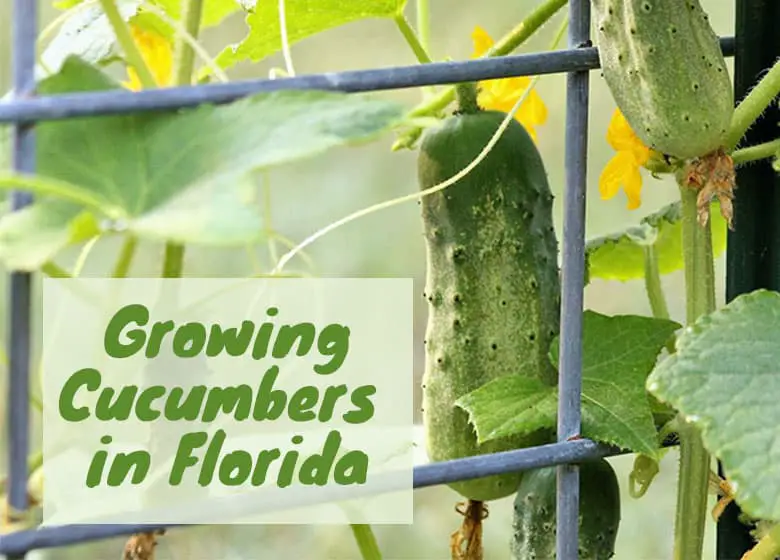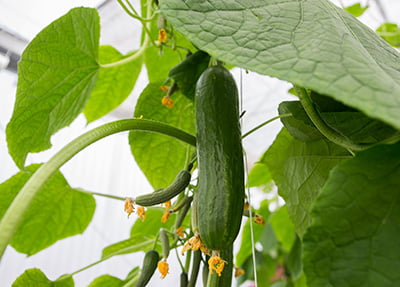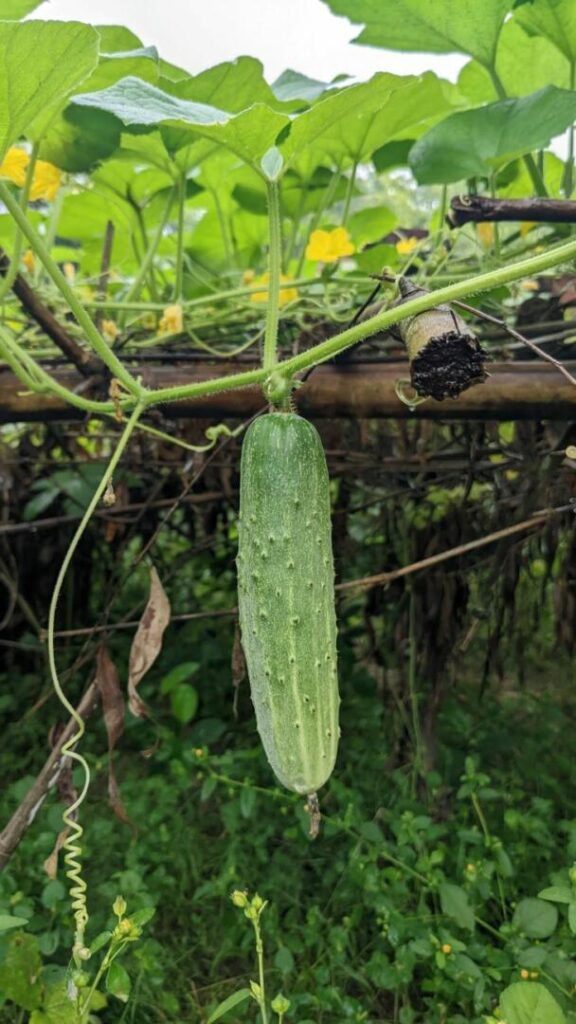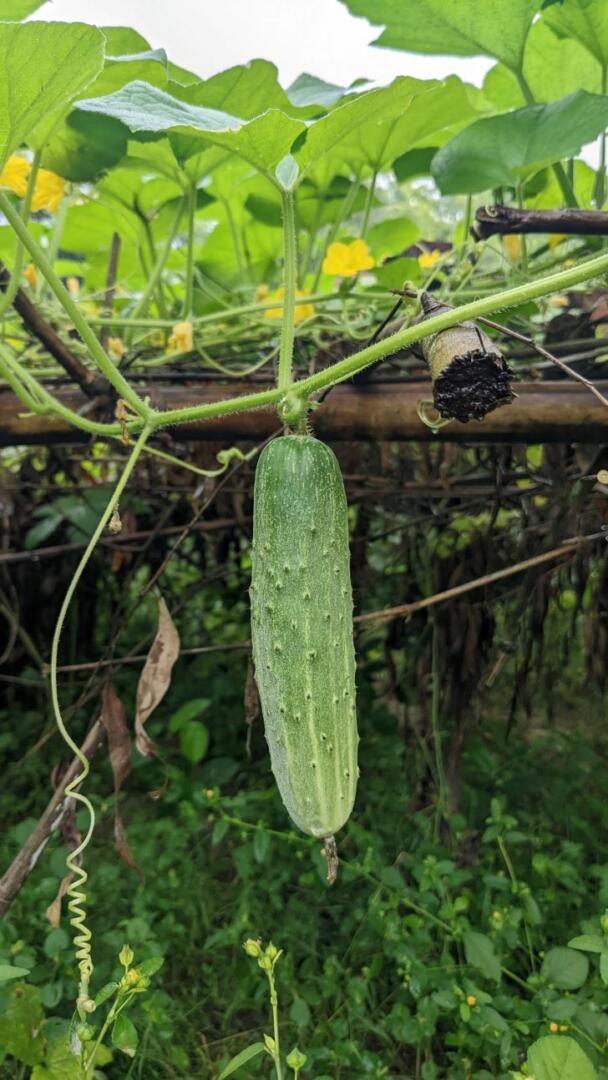So, you’re thinking about growing cucumbers in the sunshine state, huh? Well, lucky for you, Florida offers a prime climate for these crunchy green wonders. But before you grab your gardening gloves, it’s essential to know when exactly is the best time to plant cucumbers in Florida. From the warm and balmy temperatures to the occasional summer storm, understanding the ideal planting window can make all the difference between a bountiful harvest and a lackluster crop. In this article, we’ll delve into the optimal time frames to sow your cucumber seeds in the fertile soils of Florida, ensuring you’re set up for gardening success.
Best Time to Plant Cucumbers in Florida
If you’re a gardening enthusiast in Florida and want to grow your own cucumbers, it’s essential to know the best time to plant them. Cucumbers are warm-season vegetables that thrive in hot and humid climates, which makes Florida an excellent place for their cultivation. However, the timing of planting is crucial to ensure successful growth and a bountiful harvest. In this article, we will explore the ideal climate and conditions for growing cucumbers, choosing the right cucumber varieties, preparing the soil for planting, direct seeding versus transplanting, recommended planting dates, planting indoors for an early start, planting outdoors for the main crop, caring for cucumber plants, managing pests and diseases, and finally, harvesting and storing cucumbers.

Climate and Conditions for Growing Cucumbers
Cucumbers are warm-weather plants that require specific climatic conditions to thrive. In Florida, the climate is generally warm and humid, which provides an excellent environment for cucumbers to grow. The ideal temperature range for cucumber plants is between 70°F and 95°F. Additionally, cucumbers require a minimum of six hours of direct sunlight each day. It’s essential to choose a planting location that receives ample sunlight and has well-draining soil to ensure optimal growth and development.
Choosing the Right Cucumber Varieties
When it comes to selecting cucumber varieties for Florida, it’s essential to choose those that are well-suited to the region’s climate and conditions. There are several cucumber varieties specifically bred for growing in Florida, such as the ‘Florida Giant,’ ‘Poinsett,’ and ‘Marketmore 76.’ These varieties are known for their heat tolerance, disease resistance, and high yields. Consider consulting with local nurseries or extension offices to get recommendations on the most suitable cucumber varieties for your specific location within Florida.

Preparing the Soil for Planting
Before planting cucumbers, it is crucial to prepare the soil properly. Cucumbers thrive in well-draining soil rich in organic matter. Start by removing any weeds or debris from the planting area. Then, incorporate organic matter such as compost or well-rotted manure into the soil to improve its fertility and drainage. Aim for a soil pH level between 6.0 and 7.0, which is considered slightly acidic to neutral. It’s also beneficial to perform a soil test to check the nutrient levels and make any necessary amendments.
Direct Seeding versus Transplanting
When it comes to planting cucumbers in Florida, you have two primary options: direct seeding or transplanting. Direct seeding involves sowing cucumber seeds directly into the prepared soil, while transplanting involves starting cucumber seeds indoors and later moving the seedlings to the garden.
Direct seeding is a popular method for growing cucumbers in Florida. It allows the plants to establish their roots directly in the garden soil, avoiding any transplant shock. However, it may take longer for direct-seeded cucumbers to start producing fruits compared to transplanted ones.
Transplanting cucumber seedlings can provide you with an early start. Start cucumber seeds indoors about three to four weeks before the last expected frost date. Once the seedlings are about four to six inches tall, you can transplant them into the garden. This method allows you to extend the growing season and potentially harvest cucumbers earlier.

Recommended Planting Dates
In Florida, the best time to plant cucumbers depends on the specific region and the type of cucumber variety you are growing. Generally, cucumbers can be planted in Florida from late February to early April for the spring season. For the fall season, planting can occur from mid-August to early September. These dates may vary slightly depending on your specific location within the state. It’s recommended to consult with local gardening resources, such as extension offices or gardening forums, to determine the exact planting dates for your region.
Planting Indoors for an Early Start
To get an early start on your cucumber plants, consider starting seeds indoors. This method allows you to extend the growing season and potentially harvest cucumbers earlier. Begin by sowing cucumber seeds in seed trays or small containers filled with seed starting mix. Keep the seeds moist and maintain a temperature between 70°F and 85°F for optimal germination. Once the seedlings have developed a few sets of true leaves and are four to six inches tall, they are ready for transplanting outdoors. Harden off the seedlings by gradually exposing them to outdoor conditions for a week before planting them in the garden.

Planting Outdoors for Main Crop
For the main crop of cucumbers, direct seeding outdoors is a common and practical method in Florida. Once the soil has warmed up, usually around late February to early April for spring planting, prepare the planting area by removing any weeds and loosening the soil. Create small mounds or rows spaced about 3-4 feet apart to plant the cucumber seeds. Sow the seeds about 1 inch deep and 2-3 inches apart within the row. Cover the seeds with soil and gently water them. Keep the soil consistently moist until the seeds germinate and the seedlings emerge.
Caring for Cucumber Plants
Cucumber plants require proper care to ensure healthy growth and a bountiful harvest. Regular watering is crucial, especially during dry spells or hot summer months. Cucumbers have shallow roots, so it’s essential to water deeply, providing enough moisture to penetrate the root zone. Mulching the soil around the cucumbers can help retain moisture and suppress weeds.
Fertilization is also important for cucumber plants. Apply a balanced fertilizer with a ratio of nitrogen (N), phosphorus (P), and potassium (K), such as a 10-10-10 or 20-20-20 blend, according to the package instructions. Be cautious not to over-fertilize, as excessive nitrogen can result in lush foliage but fewer fruits.

Managing Pests and Diseases
Like any plant, cucumbers are susceptible to pests and diseases. Common pests that can affect cucumber plants in Florida include aphids, cucumber beetles, and spider mites. Regularly inspect your plants for any signs of damage or pests. If necessary, consider using organic or chemical controls to manage pests effectively. Additionally, certain diseases such as powdery mildew and downy mildew can impact cucumber plants. Providing good air circulation by spacing the plants properly and watering at the base of the plants can help prevent these diseases.
Harvesting and Storing Cucumbers
Cucumber plants typically start producing fruits around 50-70 days after planting, depending on the variety. Harvest cucumbers when they reach the desired size for eating. Most cucumbers are best picked when they are around 6-8 inches long for optimal taste and tenderness. Cut the cucumber from the vine using a sharp knife or shears to avoid damaging the plant. It’s important to harvest cucumbers regularly to encourage continuous fruiting.
After harvesting, cucumbers should be stored properly to maintain their freshness. Store unwashed cucumbers in the refrigerator and use them within a week for the best flavor and texture. If you have an excess amount of cucumbers, consider preserving them by pickling or canning.
By following these guidelines and understanding the best time to plant cucumbers in Florida, you can enjoy a successful cucumber harvest. Whether you prefer them fresh in salads, pickled, or used in other culinary creations, homegrown cucumbers are a delicious and rewarding addition to any gardener’s repertoire. So get your seeds or seedlings ready, prepare the soil, and start planting your cucumbers at the right time of year to maximize your chances of a successful harvest. Happy gardening!



